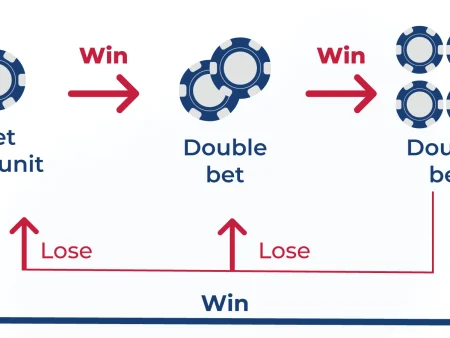
It wasn’t too long ago that a small group of Las Vegas oddsmakers would spend hours in a room, comparing stats, notes, and numbers to set daily betting lines.
Today, with online and in-person sports betting becoming mainstream across the U.S. and monthly betting handles breaking records, new technology, statistical models, and advanced computer algorithms have replaced the traditional methods of pencils, chalkboards, and subjective opinions.
The Goal Remains the Same
Despite the changes in methods, the goal is unchanged: to create the most accurate point spread for every game while successfully managing risk.
Power Rankings and Their Role
Power rankings, a numerical representation of each team’s competitive strength, remain crucial in the linemaking process. These rankings are now compiled by computers, utilizing all available statistics and data. However, it’s up to human oddsmakers to incorporate other critical factors, such as home field advantage, injuries, weather, and teams playing on short rest.
Anticipating Public Behavior
Another essential skill for linemakers is anticipating how the public will handicap and bet on each game. For instance, if data projects the Green Bay Packers as a 1-point favorite over the Chicago Bears, the oddsmakers, knowing the Packers tend to be overbet, might set the NFL odds at 2 or 2½ points instead.
Economic Implications of Inaccurate Lines
The economic impact of setting an inaccurate betting line can be significant, so oddsmakers closely watch what other linemakers are doing. Offshore sportsbooks are often the first to release betting lines. Some U.S. oddsmakers use these figures as a starting point and adjust accordingly. Ultimately, the goal is to create a point spread that attracts balanced betting action and finishes close to its initial mark.
What Determines the Point Spread?
Once point spreads are released, the betting public plays a significant role in shaping them. After a sportsbook finalizes its opening betting odds, they release the games to the public, typically six days before the following week’s college and NFL games, with lower betting limits. These lower limits allow:
- Sportsbooks to limit exposure in case one or more lines draw heavy one-sided action.
- Sharp bettors to target specific games, providing insights on which lines may need immediate adjustments.
Impact of Sharp Bettors
Sharp bettors, often professionals, significantly influence line movements. Heavy action on one side from these bettors can move the spread by two points or more. Ideally, adjusting the lines will attract bets on the less popular team, minimizing the sportsbook’s risk. However, this isn’t always straightforward, and sometimes the spread must be adjusted multiple times before the betting balances out, if at all.
In-Game Betting Algorithms
Odds for in-game sports betting, where wagers are placed after the game has started, are determined by computer algorithms. These algorithms instantly predict and price the percentage of possible outcomes as the game progresses and data changes.
Accuracy and Future Developments
Generally, sportsbooks do an accurate job of setting opening and in-game lines, though bettors can sometimes exploit vulnerable point spreads. Calculating point spreads is not an exact science, and no betting line is perfect. To improve accuracy, sportsbooks may need to further develop analytics and incorporate artificial intelligence, which seems likely in the near future, far beyond the days of pencils and chalkboards.
What is the Goal of the Point Spread?
A common mistake among novice sports bettors is to think that the point spread reflects the sportsbook’s prediction of how much a team will win or lose by. In reality, the point spread is the number that the oddsmaker hopes will attract an equal amount of betting money on both sides of the game.
The Role of Vigorish
Sportsbooks charge vigorish—a fee for accepting bets—on every wager. This vigorish is their main source of profit. Theoretically, if a book charged 5% vigorish and attracted the same amount of betting dollars on each side of the game, the book would be guaranteed a 5% profit on the total amount wagered.
While an even betting distribution doesn’t always occur, sportsbooks aim for anything close to a 50-50 split in wagering dollars. Achieving this balance eliminates their risk and assures profit.
Why Do Sportsbooks Have Different Spreads?
Sportsbooks keep an eye on each other’s betting lines, so differences in point spreads are usually minor (generally around 1 point). However, sometimes line variations on certain games are more significant due to a few reasons:
Regional Bias
Betting lines can be skewed toward the home team in several states. For instance, the University of Oregon is almost always a bigger favorite (or smaller underdog) at the state’s tribal casino sportsbooks than elsewhere. Similarly, the University of West Virginia and University of Iowa football games may have skewed lines in their respective states. Pro sports markets also show regional biases, especially in futures bets, where hometown teams often have lower odds for winning the Super Bowl or World Series compared to other parts of the country.
Raising the Vig Instead
When betting on a game heavily favors one side, an oddsmaker might raise the vigorish on that side before adjusting the spread. For example, if the Indianapolis Colts are 3-point favorites over the New York Giants and both teams are at -110, raising the vig on the Colts to -120 or -130 might be preferable to raising the spread to 3½.
Charging More for Favorites
The public has a strong preference for betting on favorites, especially significant ones. In college football, teams like Alabama, Ohio State, and Clemson are popular. So, if data indicates Alabama should be a 30-point favorite over Vanderbilt, some books might open the line at -35 or higher, knowing the public is often willing to bet on the bigger number.
Embracing More Risk
In cases of heavy one-way action, some books might accept the additional risk without further adjusting the spread. This decision gives the book a rooting interest in the game. Sometimes this strategy works out, as the public isn’t always right.
While advanced computer models and sophisticated algorithms continue to improve linemaking, sportsbooks don’t win every game or every week, especially when most favorites win. They can manage risk by adjusting point spreads but can’t eliminate it entirely.
Where Can I Learn More About Point Spreads?
Bookies.com offers several resources, including guides on point spread betting strategies, the different types of sports bets, and a point spread betting FAQ.
Additionally, you can learn more about making spread bets and wagering at top online sportsbook sites like FanDuel, DraftKings, and William Hill, which provide sports betting tutorials.







